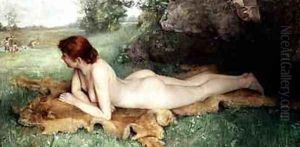Emil Gustav Adolf Glockner Paintings
Emil Gustav Adolf Glockner, more commonly known as Adolf Glockner, was a German painter born on June 24, 1888, in Dresden, Germany. Glockner's artistic journey began in an era when Germany was experiencing significant changes in its social, political, and cultural fabric, heading towards the turmoil of the First World War. Despite the tumultuous times, Glockner pursued his passion for art, which was heavily influenced by the movements and styles that emerged during the late 19th and early 20th centuries, such as Impressionism, Expressionism, and the Secessionist movements.
Glockner initially trained at the Dresden Academy of Fine Arts, where he was exposed to a variety of artistic techniques and philosophies. His style was characterized by a bold use of color and a tendency to explore the emotional and psychological dimensions of his subjects. Glockner's works often depicted urban scenes, landscapes, and portraits with a distinct sense of mood and atmosphere, reflecting the inner feelings of his subjects or the ambiance of the environment.
Throughout his career, Glockner remained relatively independent of any single artistic group or movement, which allowed him to develop a unique and personal style. However, he was certainly aware of the contemporary art trends of his time, and his work does reflect some influence from artists such as Vincent van Gogh, and later, from the German Expressionists. Glockner's paintings are noted for their intensity and the emotive power of their brushwork, which often verged on the abstract.
Adolf Glockner's career was cut short by the rise of the Nazi regime in Germany. The Nazis condemned modernist art as 'degenerate,' and artists like Glockner found it increasingly difficult to work and exhibit their art. Many of Glockner's contemporaries faced persecution, and some of his own works may have been destroyed or lost during this period. His life ended prematurely when he passed away on September 29, 1939, in his birth city of Dresden, just after the onset of the Second World War. Unfortunately, due to the political climate of the time and subsequent historical events, Glockner's contributions to art have not been as widely recognized or studied as those of some of his peers. Nevertheless, his works are appreciated by art historians and collectors who recognize the quality and intensity of his paintings.
